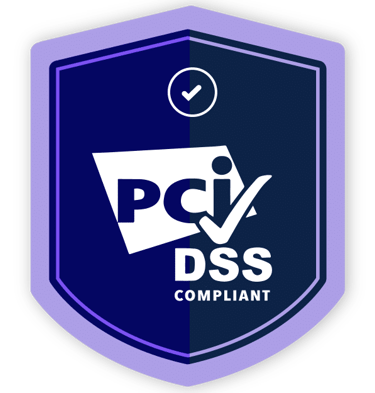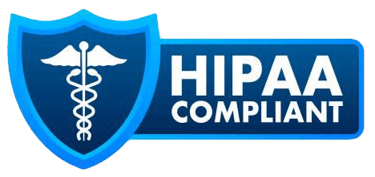Ensuring Hospice CTI Narratives Meet Medical Necessity Requirements
Ensure your hospice CTI narratives stand up to Medicare’s medical necessity standards — including detailed, patient-specific documentation and proper recertification workflows.
In the realm of hospice care, documentation is far more than an administrative exercise. For providers of the hospice benefit under the Centers for Medicare & Medicaid Services (CMS), the signature document that sets the eligibility — and reimbursement — in motion is the certifying physician’s narrative supporting the Certification of Terminal Illness (CTI). A robust CTI narrative is essential not only to meet payment conditions but also to demonstrate compliance with the Conditions of Participation (CoPs) and medical necessity requirements.
This article provides a detailed, professional examination of what hospice agencies must include in CTI narratives, common pitfalls, best practices, and how HealthBridge can assist in strengthening narrative workflows and documentation integrity.
Understanding the Regulatory Framework
Effective CTI narratives derive their force from several regulatory pillars.
1. Eligibility and Medical Prognosis
Under federal regulations, the certification must reflect the physician’s clinical judgment that the individual is “terminally ill,” meaning a life expectancy of six months or less if the illness runs its normal course. The written certification must include a brief narrative by the certifying physician explaining the clinical findings that support that six-month prognosis.
2. Conditions of Participation (CoPs)
The hospice CoPs set forth requirements for assessments, care planning, record keeping, physician responsibilities, and more. They mandate that the clinical record include the physician certification or recertification of terminal illness, along with supporting evidence for the physician’s determination. The CoPs also outline physician responsibilities to review subjective and objective findings, related diagnoses, medications, and treatment history.
3. Conditions for Payment
Payment requirements are directly tied to the quality and completeness of the CTI narrative. Documentation must support the hospice eligibility, the plan of care, and the narrative itself. If the CTI narrative is missing or incomplete, the hospice risks claim denial, repayment demands, or regulatory action.
What a Strong CTI Narrative Should Include
To meet both medical necessity and regulatory compliance, a CTI narrative must demonstrate the following key components:
1. Patient-Specific Clinical Detail
A narrative cannot be generic or templated. It must reflect the individual’s unique clinical circumstances. The physician should include:
The primary terminal diagnosis (e.g., end-stage heart failure, metastatic cancer, advanced COPD).
Related diagnoses contributing to the decline (e.g., renal failure, diabetes, chronic infections).
Subjective and objective findings such as weight loss, poor appetite, functional decline, frequent ER visits, or shortness of breath at rest.
Treatment history and the patient’s response or non-response to therapy.
Clinical reasoning that links these findings to the six-month or less prognosis.
2. Life Expectancy Justification
The narrative must clearly explain why the physician believes the patient’s life expectancy is six months or less if the disease follows its typical course. For example:
“Despite optimal treatment, the patient demonstrates progressive weight loss of 15% in three months, increasing fatigue, dyspnea at rest, and total dependence in activities of daily living, consistent with a terminal prognosis.”
3. Attestation and Signature Placement
The narrative must appear immediately above or beside the physician’s signature. The certifying physician must include an attestation that the narrative is based on their clinical judgment, review of the medical record, or personal examination of the patient. Each narrative must be signed and dated by the physician.
4. Face-to-Face Encounter Support (When Applicable)
For the third benefit period and beyond, a face-to-face encounter is required. The CTI narrative must describe how the findings from that encounter support continued hospice eligibility and terminal prognosis. It should include the date of the visit, summary of findings, and statement of how these findings confirm ongoing decline.
5. Link to Plan of Care and Services
Although not explicitly mandated in the CTI regulation, an effective narrative aligns with the patient’s plan of care. The documentation should demonstrate that services are being provided for palliation and symptom management, rather than curative intent. The narrative, assessment, and plan of care should tell a cohesive story that substantiates the need for hospice.
Common Pitfalls and Risk Areas
In practice, hospice organizations encounter several recurring issues in CTI narratives that can jeopardize compliance and payment:
Generic or templated text: Using the same language for all patients without patient-specific details.
Narratives written by non-physicians: Only the certifying physician can compose and sign the CTI narrative.
Missing attestation statement: Failing to include a declaration that the physician authored the narrative.
Incorrect placement or signature issues: Narrative not located near the signature or missing the date.
Incomplete face-to-face documentation: Not including how the encounter supports prognosis.
Mismatch with clinical findings: Narrative does not reflect the information in the clinical record.
Delayed certification: Missing the regulatory timeline for completing the certification or recertification.
Missing or incomplete supporting records: Inadequate documentation in the clinical record to support eligibility.
Each of these errors can result in a claim denial, repayment, or audit exposure. Beyond financial impact, they also reflect poorly on the hospice’s compliance and quality management practices.
Best Practices for Hospice Agencies
To ensure CTI narratives meet Medicare medical necessity requirements, agencies should implement structured systems and education.
A. Develop Clear Templates and Physician Guidance
Provide certifying physicians with a structured worksheet that prompts the inclusion of specific details such as diagnosis, decline indicators, hospitalization history, and recent lab or weight data. Emphasize that each narrative must be original and patient-specific — never a copy-and-paste.
B. Workflow Integration and Timely Completion
Ensure CTI narratives are completed within required timeframes — typically no later than the start of the benefit period or within two days thereafter.
Use workflow reminders in your EMR to alert staff when certifications or recertifications are due.
Include automated prompts to verify signature placement and attestation language before finalizing.
C. Audit and Quality Control
Conduct quarterly internal audits of CTI narratives to confirm compliance and consistency.
Check that narratives include appropriate clinical detail, proper placement, and attestation.
Document corrective action for any deficiencies and review trends during interdisciplinary group (IDG) meetings.
D. Physician Education and Accountability
Ensure physicians are trained on CMS and CoP requirements. Orientation and ongoing training should emphasize:
Narrative authorship requirements.
Timeliness expectations.
The link between narrative detail and claim payment.
Establish accountability through medical director oversight or peer review of narrative quality.
E. Link to Plan of Care and Medical Necessity
Encourage collaboration between clinical staff, the IDG, and the certifying physician to ensure all components of documentation — assessment, plan of care, and narrative — align seamlessly. This connection strengthens the medical necessity argument and withstands audit scrutiny.
F. Leverage Technology
Modern EMR systems can streamline compliance by embedding prompts, signature verification, and deadline alerts. Automation ensures no certification is missed and helps maintain documentation integrity.
Application to Home Health Agencies
Although CTI narratives apply to hospice, the underlying documentation principles mirror those in home health: comprehensive assessment, individualized care planning, and clinical justification for services. Many home health administrators now oversee hospice operations or dual-licensed programs. Understanding hospice CTI requirements enables stronger cross-compliance and smoother transitions of care when patients move from home health to hospice.
Action Steps for Your Agency
Review your current narrative process.
Assess how CTI narratives are drafted, approved, and filed. Identify gaps or inconsistencies.Create a CTI Narrative Checklist.
Include essential items such as diagnosis, decline indicators, functional assessment, hospitalization data, weight loss, face-to-face findings, attestation, and signature placement.Train and reinforce.
Educate physicians and clinical staff on the importance of individualized documentation. Emphasize that narratives directly impact both patient eligibility and agency reimbursement.Implement internal audits.
Conduct regular reviews of certification and recertification documentation. Track metrics such as completion rates, compliance percentages, and error trends.Align with the plan of care.
Integrate the CTI narrative into the broader patient record. Ensure consistency between what’s written in the narrative and what is documented in nursing notes and assessments.Engage external consulting if needed.
Partnering with a qualified compliance consulting firm can provide unbiased audits, staff education, and ongoing monitoring for improved accuracy and defensibility.
How HealthBridge Can Help
At HealthBridge, we specialize in helping hospice and home health agencies meet Medicare’s Conditions of Participation and documentation standards. Our consultants offer:
Comprehensive CTI narrative audits to ensure compliance with all medical necessity criteria.
Custom narrative templates and workflows that maintain individuality while meeting regulatory expectations.
Physician and staff training on documentation integrity, medical necessity standards, and recertification requirements.
Mock survey readiness programs that evaluate how CTI narratives align with care plans and patient outcomes.
Ongoing QA and QAPI integration that ensure CTI reviews become part of your continuous improvement cycle.
By working with HealthBridge, your hospice can establish a documentation culture that prevents denials, withstands audits, and promotes quality care through compliance.
Conclusion
Crafting strong, defensible CTI narratives is both an art and a regulatory necessity. Narratives that lack individualization, clear clinical reasoning, or attestation can jeopardize eligibility and reimbursement. A well-written CTI narrative reflects the physician’s professional judgment, connects to the plan of care, and demonstrates the patient’s decline consistent with a six-month prognosis.
Hospice providers who invest in education, workflow integration, and audit processes not only reduce financial risk but also elevate the quality of care delivered. When your organization needs professional guidance in achieving this balance, HealthBridge stands ready to assist with consulting, training, and compliance management solutions that keep your hospice compliant, efficient, and patient-centered.







